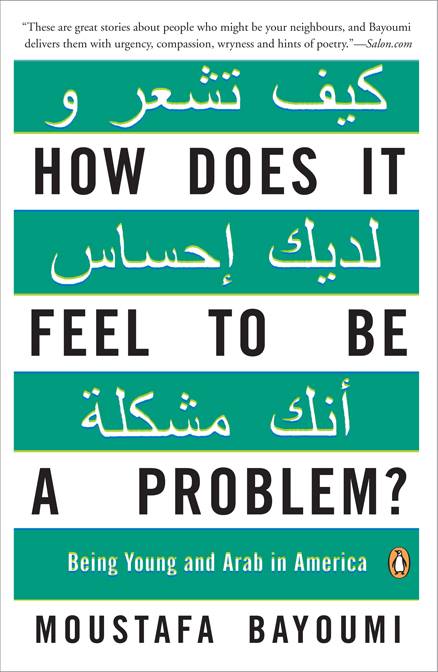The title of this book challenges you: “How Does it Feel to be a Problem?” It’s a question that makes us uncomfortable. Does the question echo for you? W.E.B Du Bois asked the same thing in 1903:
“They say, I know an excellent colored man in my town; or, I fought at Mechanicsville; or, Do not these Southern outrages make your blood boil? At these I smile, or am interested, or reduce the boiling to a simmer, as the occasion may require. To the real question, How does it feel to be a problem? I answer seldom a word”1
Sometimes it’s hard to care about injustice until it’s happening to someone you care about. How Does it Feel to Be a Problem? – Being Young and Arab in America by Moustafa Bayoumi offers portraits (true stories) of these young people growing up in New York in the years after 9/11 and the Patriot Act.
They’re just kids, high school students, young adults trying to figure out who they are and who they may want to become. They’re also living at a moment in history when who they’re perceived to be is sometimes a problem.
By telling the stories of these seven young people, author Moustafa Bayoumi pulls us into the question. He demonstrates that the various immigrant experiences that these young people are going through are American experiences. They chime into an American struggle with injustice and diversity that carries through our history. If we want to know who we are as Americans, we can read the stories of these young people. We are us and them.
Rasha is nineteen years old when INS arrests her, along with her mother, her sister, and her older brother, for reasons vaguely related to immigration. The conditions of their arrest and detainment are disturbing. In the Afterword, Bayoumi relates Rasha’s experience to many others. I was moved by the description of the time she spent with other prisoners: “And slowly Rasha and her sister and mother learned that the women in jail, both immigrant and criminal prisoners, were kind with each other… Being treated as beasts grew their humanity to one another. It was how everyone survived”2.
Sami is an Arab-American Christian serving in the U.S. military in Iraq. Yasmin is an American Muslim growing up in Brooklyn, whose principal tells her that she can’t run for Student Body President unless she attends the school’s co-ed dances. Omar is a Palestinian-American trying to start a career in journalism.
Rami’s story is my favorite because I love hearing about how people connect to their faith. While Rami’s father in jail related to his immigration status, Rami starts praying more and learning more about Islam: “Since his incarceration Rami’s father also found his faith growing. The Muslim inmates in Passaic [County Jail, New Jersey] were a large group who were very organized and devout. They leaned on one another, and Rami’s father began praying regularly with them. Father and son both became more religious around the same time, even if they followed two different paths. They compared notes on Islam”3.
Bayoumi reminds us: “Islam was practiced in this land centuries ago. As far back as the colonial era, many West African Muslims were sold into slavery, making Muslim-American history older that the republic itself”4 I wholeheartedly recommend that you read one of these stories. After that, you’ll want to read the other six. The author captures the authentic and complex stories of these young people, at the crossroads of history, stuck between that delightful American optimism and moments of injustice that knock the wind out of you. Just like the rest of us.
by Jeannine Sherman – January 9th, 2022
Sources:
1 Du Bois, W.E.B. The Souls of Black Folk; Essays and Sketches. Chicago, A. G. McClurg, 1903.
2 Bayoumi, Moustafa. How Does it Feel to be a Problem? – Being Young and Arab in America. New York, The
Penguin Press, 2008, p. 27.
3 Bayoumi, p. 232.
4 Bayoumi, p. 261

